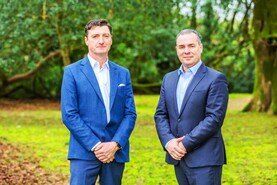Have the milk wars started already? In theory the price of dairy commodities and milk price globally should be on a sharp rising curve. Milk supply in Ireland, and most of Europe in fact, is sharply down.
Wet weather across Europe has further dampened the already downward curve that new environmental policies have created. High prices for feed and fertiliser are not helping farmers.
Look across to our dairy friends in the Netherlands. The expectation is that Dutch milk may shrink by 25% in the coming years. That’s in the order of three billion litres of milk.
Dairy giants like FrieslandCampina are spreading their wings and pushing across into Eastern Europe.
This comes at a cost. They have to do deals with large suppliers.
Friesland has scale and is forced to look for milk, therefore smaller companies will also have to do this.
A new Dutch government could tweak policy and this milk fall off might not happen, but the creation of that government is proving to be a struggle as each month passes.
The French and German dairy sectors that are over twice the size of Ireland are already on a downward spiral.
So let’s roll the Irish scenario forward. We hear from Moorepark’s Laurence Shalloo this week that low nitrogen systems, like those on long term, low nitrogen trials, like Solohead, are effectively setting up to work at a stocking rate of less than two cows/hectare.
Reality
That’s when clover is successful. The reality is that many Irish farmers are struggling with establishing and retaining clover in grass.
So if we are realistic, and to allow some sort of cushion for more variable soil types and management, it means commercial, low nitrogen, good grass and clover farms might be stocked at between 1.5 and two cows/hectare.
That’s 40 cows less on your typical 100 cow farm as currently managed. That might be the extreme, but lower artificial nitrogen and lower stocking rate rules mean a significant reduction nationally.
We are already seeing that in milk supplies to the co-ops. Yes of course, this is further compounded by the wet weather, but the downward trend is real. Would you blame farmers for downsizing or less investment? I wouldn’t.
Nobody can show them a roadmap. There is no vision. There is a promise and eagerness to work on reducing nutrient losses, but let’s be real, this won’t be fixed overnight.
We don’t even have the right policy instruments yet available to farmers to allow them invest. How can we expect farmers to invest when all we are throwing at them is downward pressure?
Investment, and return on farm investment, is a 20 to 30 year play, not five years. Milk suppliers don’t know if they will be stocked at 170 or 220 in two years’ time. What reasonable financial institution would bank investment if you can’t answer that question.
The reality is that banking will be done at a 170 stocking rate. Farmers can’t farm or invest on a political promise.
So, if we don’t have the milk at farm level, we won’t have it in the milk factories. All the milk factories are staring down the barrel of higher green investment.
They are all building new teams of personnel to meet the new regualory green requirements and reporting. All have to decarbonise their business and their supplier base.
In short, a financially untenable situation is emerging, which is steering Irish livestock farmers towards keeping fewer livestock.
Who will pay for the greening of less milk? Lack of time, money, and practical solutions will undermine the entire agricultural transition.
Opportunities
Farmers need certainty to leverage innovations and business solutions. Among other things, there are great opportunities for slurry. Irish livestock farmers must be able to seize these opportunities.
The uptake of nitrogen for grass growth in Ireland is not at all comparable to other parts of Europe, yet we are all being steered towards the 170 stocking rate standard. Genuinely it’s nonsense.
Unless our Government and Department take a real lead on this and get solid European commitments and changes, we risk losing support for desirable environmental investment. Family farms are small businesses that are resilient but need certainty.






 This is a subscriber-only article
This is a subscriber-only article









SHARING OPTIONS: